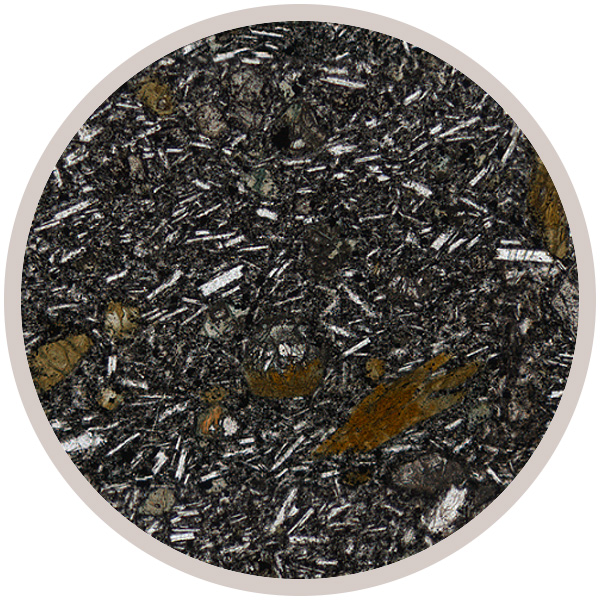
Fact sheet
This Carboniferous age olivine basalt forms part of the Clyde Plateau Lavas north of Corrie, Isle of Arran, Scotland. These lavas are linked to similar eruptions in the western part of the Midland Valley of Scotland. Several Clyde plateau lavas outcrop on Arran, and they can be seen near the base of the Carboniferous succession at Corrie.
In thin section the rocks contains high relief fractured phenocrysts of olivine with mid-order birefringence colours, and partially altered to clays along the cracks. Smaller olivine grain appear to have been completely altered to clays and are visible as brown patches of fine grained clays. The rock also contains large pale pink pyroxene phenocrysts exhibiting characteristic cleavage and also some alteration. The phenocrysts sit in a groundmass of 100-200 micron long plagioclase laths and fine grained opaque mineral rich matrix.
The United Kingdom Virtual Microscope (UKVM) collection consists of igneous, sedimentary and metamorphic rocks from around the UK.
It is intended as a teaching resource, helping to tell the story of the common rock types and how they form, and reflecting the history of the UK at the margins of the continent of Europe. The collection is a series of teaching sets, for example igneous rocks from the North Atlantic Igneous Province and SW England; high-temperature metamorphic rocks from Scotland and low-temperature metamorphic rocks from Wales; and sedimentary rocks, including English limestones and sandstones.






